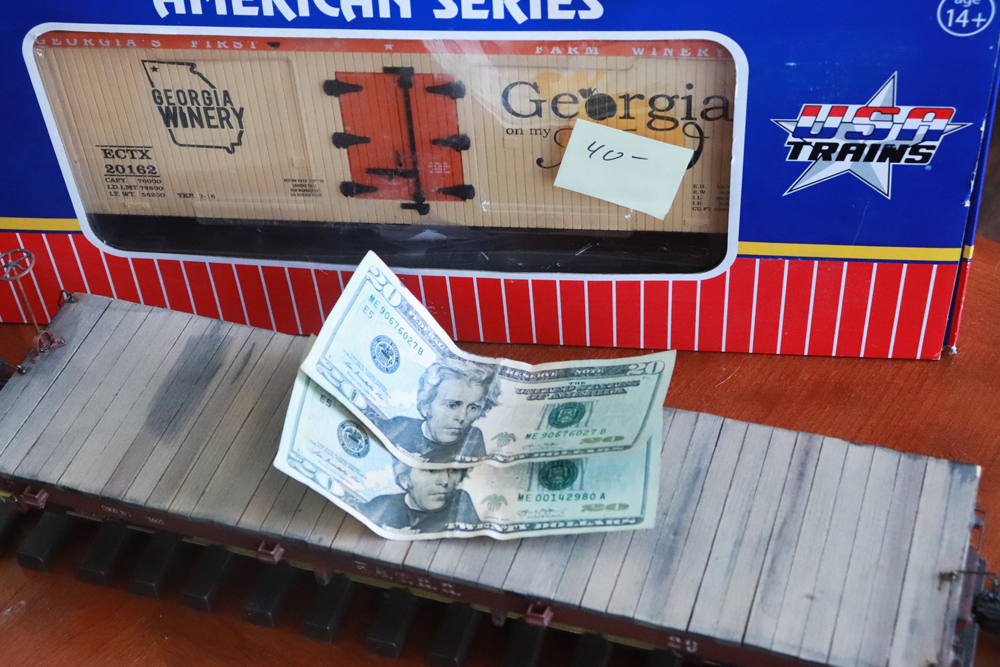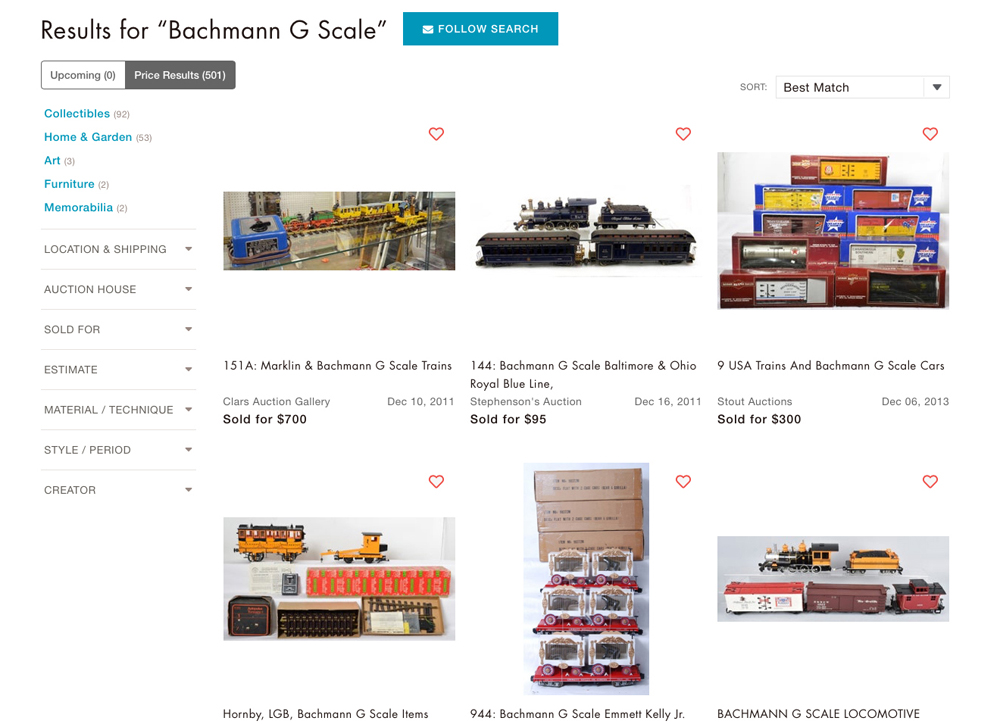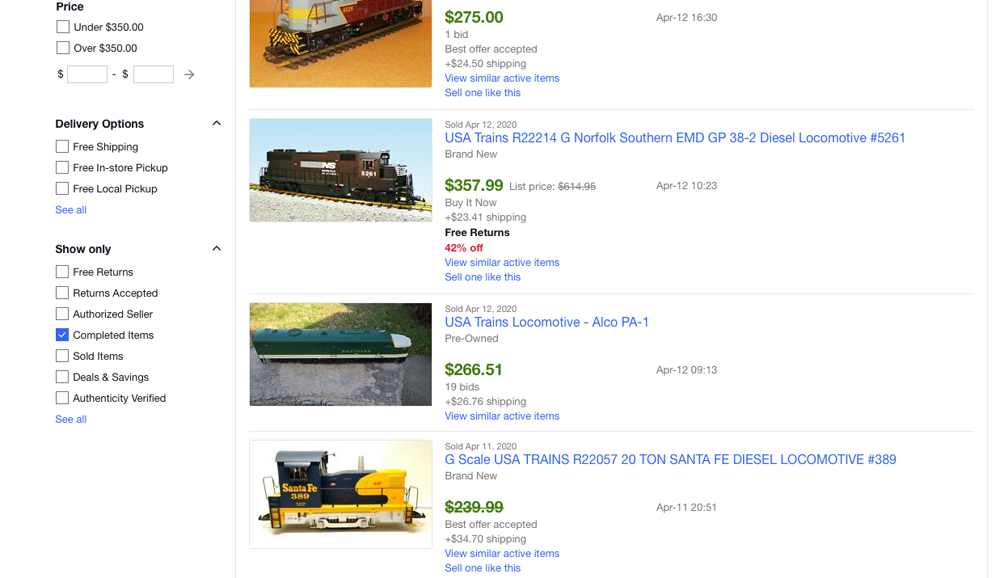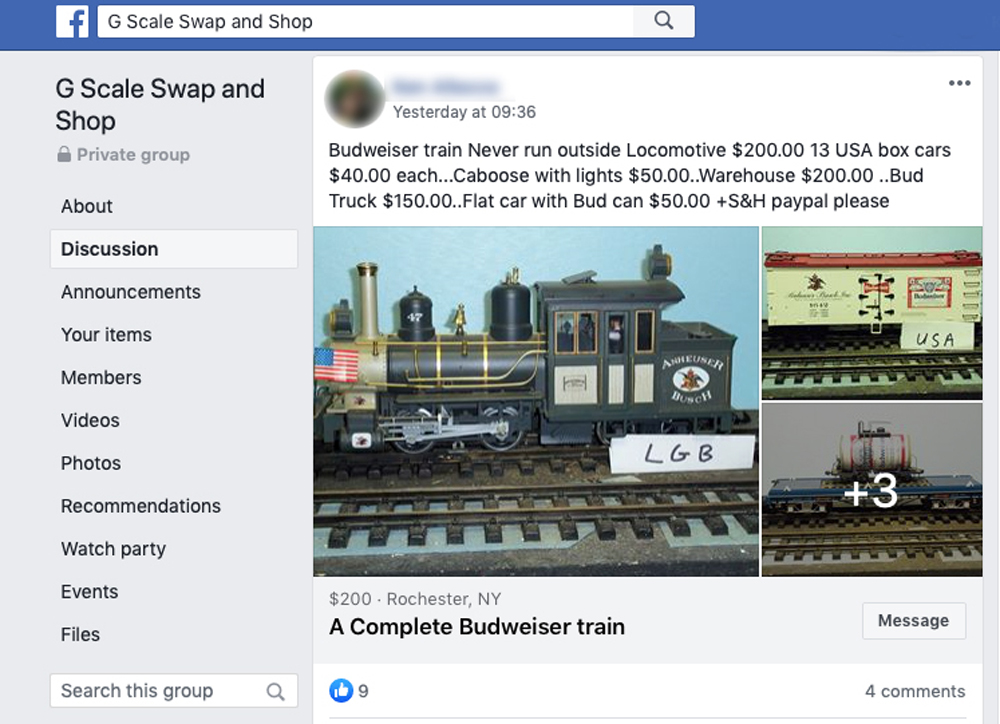“How much is this worth?” is a simple enough question. I wish it had an easy answer. There is no Kelley Blue Book value for large scale trains like there is for vehicles. There are also variables that will affect the value: condition, modifications to the model, and your motivations for selling.

First, you need to know what you have in your collection – where you bought it, who built it, what’s in it, etc. I wrote about the benefits of documenting your collection in the Summer 2020 issue. Sadly, the task of selling collections is often left to survivors who don’t have that information. Make sure a copy of your model train information is included with your estate planning paperwork.
Find a value
Let’s start by finding a baseline value for what you have. If it’s a commercial model, then you know how much you paid for it – a good starting point. While there are no published guides for values of large-scale trains, you can search the internet to see what other people have paid for items. Online auction sites like eBay are good places to check. Make sure to select “completed items” to see the prices items actually sold for (you’ll need an eBay account to use this feature). Looking solely at the asking price isn’t necessarily reflective of value.

Many auction houses have online presences. There are websites such as liveauctioneers.com which act as a “clearing house” for auction services. You can research your models there and find out what they have sold for in the past. Facebook is another resource for valuing your trains. There are many garden railroad groups and a few dedicated buy/sell groups for large-scale trains.
Factors that affect value
Condition tops that list. Faded paint, rust, and broken or missing pieces will all detract from an item’s value. For locomotives, mileage and wear and tear on the wheels and gears factor heavily against price. Having said that, wear and tear can also be a sign of a robust, reliable locomotive. Just because you’ve got 300+ hours on an engine doesn’t mean you must sell it for a rock-bottom price. Reliability has a value of its own.
What about customized or scratchbuilt models? The reality is that the time we spend doing that doesn’t come back to us in terms of money when we sell our models. In my experience, buyers rarely see much added value in such things. A custom-painted locomotive won’t usually sell for more than a factory-painted engine. A custom weathering job on an engine or car can even detract from the price. Many buyers prefer a “fresh out of the box” look. A scratchbuilt model won’t sell for much more than a commercial model of similar design. Buildings in general are harder sells (shipping alone is a challenge).
Aftermarket electronics can be a mixed bag when it comes to selling. Knowing what’s inside a model and how it works is key. If a locomotive has been converted to battery power, you’ll have to be able to tell the buyer what they’ll need to make it run (what kind of battery, transmitter, etc.). Sound systems often add a little bit of value to the price of a locomotive, but seldom the full price of the sound system itself.
Lastly, there are high-dollar trains, such as limited edition locomotives, sets, and other things which fetch 4- and even 5-figure prices. They were produced in small batches, so they’re expensive. Also, the models may be of prototypes which appeal to a narrow group of enthusiasts. As a seller of one of these pieces, your potential market isn’t any larger than what the manufacturer had when they made it, so you’ll have to be patient. It may take time to find the right buyer.
Motivation versus price

Motivation will affect your price. Want to get rid of stuff in a hurry? Everyone loves a bargain. Price locomotives for $100-$300, cars for between $30-$100, track at $2 per foot, and you’ll have your garage emptied in no time.
That’s great for buyers, but if you’re a seller researching prices and find items sold at these yard-sale prices, it’s not an accurate reflection of worth. Usually you can afford to be patient and wait to get a better price. These types of sales are where you’ll discover more of a fair market value for your trains.
Where to sell

If you’re looking to sell your entire collection, it’s common to sell the whole kit and caboodle for one price. There are shops and companies that are in the business of reselling these collections for a profit. Keep in mind that they will offer you a low-end price for your items. It’s much easier for you to have them back the truck up, load it, and haul it away, but you may be leaving money on the table. Contrast that with selling items yourself through swap meets, online listings, and other means. That’s a lot more work for you in terms of your time, but you’re likely to get more money overall.
As for selling items yourself, you can use various online auctions like eBay and others. I’ve sold on various Facebook buy/sell groups with great success. Some hobby shops buy and sell used items. Check your area for a garden-railway club and see if members might be interested in purchasing anything.
Watch for local train shows and swap meets. Note: The swap meet venues tend have “yard sale” pricing, but there’s often an unwritten “best offer” on any price. Some folks aren’t hagglers and will pay the listed price. Price things at what you’d like to receive, and see where it goes.
In conclusion
The most important thing when selling your trains is honesty. Be honest with others about what it is you’re selling and about what you expect to get for it. The secondary market is a thriving place to do business. These days, it’s not uncommon to meet folks who have gotten into this hobby without ever having bought anything “new in box.”














Great write up. I’ll only add that in my personal experience I have found that I could buy and sell G gauge items much easier than O gauge. Maybe both me and others are more forgiving and less picky about G gauge than our Lionel and other O gauge pieces, especially as in my case I know I’ll be operating them outdoors etc. I also find it fun to see what some Ebayers think they might get for their models so I don’t look at just completed items. Additionally, I sold some of my O gauge for the funds to get started in garden RR so that made it easier for me to get started in this fun larger scale. Thanks for sharing.
-jkelty